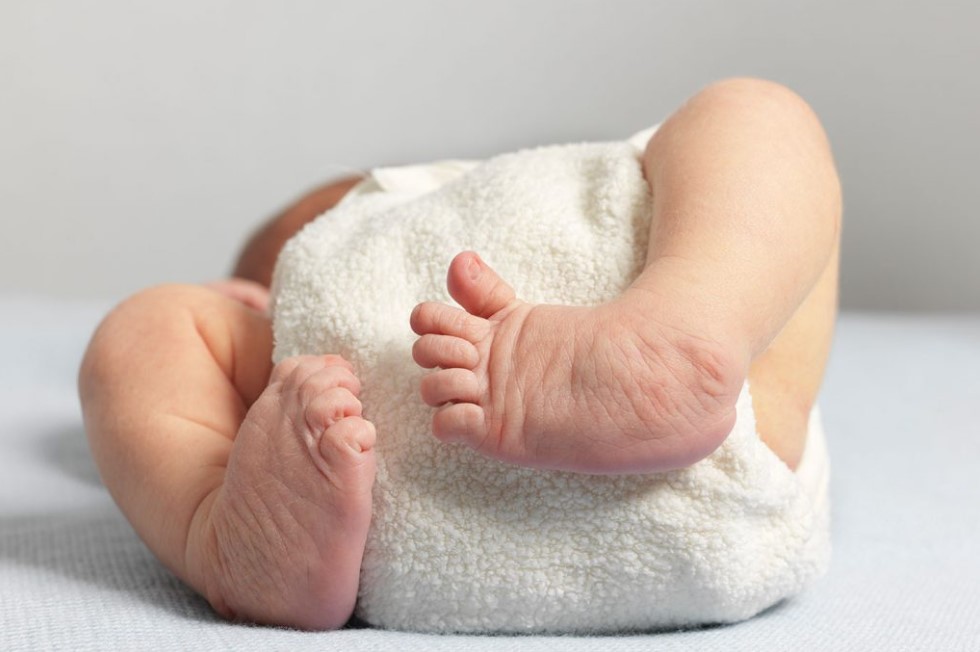Clubfoot is a congenital disease in which a baby’s foot or feet curve inward from birth.
It won’t go away on its own, but children who receive therapy early on have positive effects. Some of the clubfoot treatments involve Ponseti procedure, french method, and surgery.
To learn more in detail about these treatment methods and what causes clubfoot, keep reading!
Table of Contents
A Bit About Clubfoot
As mentioned above, clubfoot is a congenital (existing at birth) ailment in which the baby’s foot turns inward or downward. It can be minor or severe, and it can affect one or both feet at the same time.
The tendons that connect the leg muscles to the heel are excessively short in newborns with clubfoot. As a result of strained tendons, the foot twists out of form. The foot is also turned in and under. The bones of the foot and ankle are all present but are misaligned due to differences in the muscles and tendons acting on the foot.
The clubfoot affects roughly one out of every 1,000 live births, making it one of the most common congenital foot malformations.
What Causes Clubfoot?
Now, what causes clubfoot? Well, it has no established cause (it is idiopathic), but it could be caused by a mix of heredity and environment. Also, boys are roughly twice as likely as girls to develop clubfoot.
Some of the major risk factors include:
Family history: It is one of the risk factors. If any of the parents or one of their other children has had clubfoot, the baby is more likely to get it.
Congenital problems: Clubfoot is sometimes linked to other skeletal abnormalities that are present at birth, such as spina bifida, a birth abnormality in which the spine and spinal cord do not grow or close properly.
Environment: Smoking during pregnancy increases the baby’s risk of developing clubfoot.
During pregnancy, there isn’t enough amniotic fluid. Clubfoot can also be caused by a lack of the fluid that surrounds the foetus during the pregnancy.
Clubfoot Treatment
Clubfoot can be treated in a number of ways. The options will be discussed with you by your healthcare team, who will then decide which is best for your kid.
To get to know which treatment option is best for your child having clubfoot, you may consult with the best orthopaedics near you. You can make an appointment via Healthwire.pk.
Some of the treatments include:
Ponseti Method for Clubfoot Treatment
This approach combines stretching with the use of a cast. In this treatment method, the doctor will stretch your baby’s foot toward the ideal position followed by applying a cast to keep it there.
The doctor will take the cast off every week or two, move the foot closer to the ideal position, and then re-cast it. Up until the foot is totally in the proper position, this will continue (usually several months).
The Achilles tendon, which joins your baby’s heel to his or her calf muscle, occasionally needs to be clipped as well. The tendon will be able to reach its normal length by doing this. This is done before applying your baby’s final cast.
Bracing After Ponseti Method
Dr. Afzal Hussain– one of the top orthopedic and spinal surgeons, who has experience of 36 years says, clubfeet have a natural tendency to recur, even after successful casting correction.
Therefore, your infant will need to wear a brace (often referred to as ‘boots and bar’) for a few years to guarantee that the foot will remain in the proper position forever. The brace maintains the correct foot angle so that the correction can continue.
Although this bracing technique might be taxing on families and parents, it is necessary to stop relapses. It’s crucial to do bracing after Ponseti method treatment:
- Wear the brace constantly, for three months. Then, for the next four years, just wear it at night or during naps.
- Pay close attention to the directions. The foot may revert to the clubfoot position if a child doesn’t wear the braces as directed.
Do you want to know what to eat during bone fracture? Click here!
French Method for Clubfoot Treatment
Stretching, mobilising, and taping are further nonsurgical clubfoot treatment techniques.
A physical therapist with appropriate education and expertise usually oversees the French approach, often known as the functional or physical therapy method.
The French approach is started soon after birth and necessitates family participation, just like the Ponseti method. The infant’s foot needs to be stretched and moved every day, then taped to preserve the flexibility developed by the movement.
To retain the increased range of motion after taping, a plastic splint is placed on top of the tape. This approach necessitates roughly three weekly trips to the physical therapist. The therapist will also instruct the parents on how to properly carry out this daily regimen at home because it is a daily routine.
Similar to children treated with the Ponseti method, Achilles clippings are frequently necessary for neonates treated with the French approach to enhancing ankle dorsiflexion.
The family must continue the daily regimen of stretching, taping, and splinting until the child is 2 to 3 years old in order to prevent the recurrence of the clubfoot.
Learn more about nutrition in infants.
Surgery
More invasive surgery can be required if your kid has severe clubfoot or if it doesn’t improve with nonsurgical remedies.
To assist in easing the foot into a better position, an orthopaedic surgeon might stretch or rearrange tendons and ligaments.
Your child may need to wear a brace for around a year to prevent the clubfoot from returning after the procedure, during which time they may be in a cast for up to two months.
